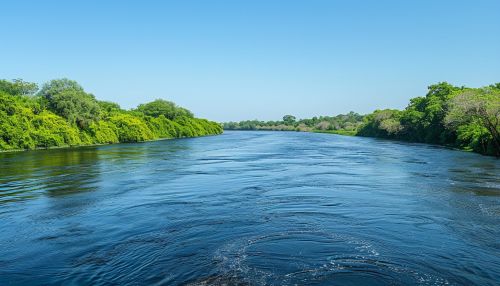Potomac River
Geography
The Potomac River is a significant geographical feature in the eastern United States, flowing over 405 miles from its source in the Allegheny Mountains of West Virginia to its mouth at the Chesapeake Bay. The river traverses through parts of Maryland, Virginia, West Virginia, and the District of Columbia, serving as a natural boundary between Maryland and the District of Columbia, and most of Virginia and West Virginia.


Hydrology
The Potomac River's hydrology is complex, with the river's flow varying greatly depending on a variety of factors including rainfall, snowmelt, and human intervention. The river's watershed covers approximately 14,670 square miles, and includes tributaries such as the Shenandoah River, the Monocacy River, and the Anacostia River. The river's flow is regulated by a series of dams and reservoirs, including the Jennings Randolph Lake and the Little Falls Dam.
Flora and Fauna
The Potomac River and its surrounding areas are home to a diverse range of flora and fauna. The river itself supports a variety of fish species, including the American shad, striped bass, and the blue catfish. The river's banks and the surrounding areas are home to a variety of plant species, including the American sycamore, river birch, and the swamp milkweed. The river's watershed also supports a variety of wildlife, including the white-tailed deer, red fox, and the bald eagle.
History
The Potomac River has a rich history, with human habitation in the area dating back thousands of years. The river was a significant transportation route for Native American tribes, including the Algonquin people, and later for European settlers. The river was also a significant factor in the establishment of the nation's capital, Washington D.C., on its banks. The river has also been the site of significant historical events, including the John Brown's raid on Harpers Ferry and the Battle of Antietam during the American Civil War.
Environmental Issues
The Potomac River faces a number of environmental issues, including pollution from agricultural runoff, urban stormwater, and wastewater treatment plants. Efforts to restore and protect the river's health are ongoing, led by a variety of organizations including the Potomac Conservancy and the Chesapeake Bay Program. These efforts include initiatives to reduce pollution, restore habitats, and increase public awareness of the river's ecological importance.
Recreation
The Potomac River offers a variety of recreational opportunities, including boating, fishing, and hiking along the river's banks. The river is also a popular destination for whitewater rafting, particularly in the Great Falls Park area. The Chesapeake and Ohio Canal National Historical Park along the river offers opportunities for hiking, biking, and exploring historical sites.
